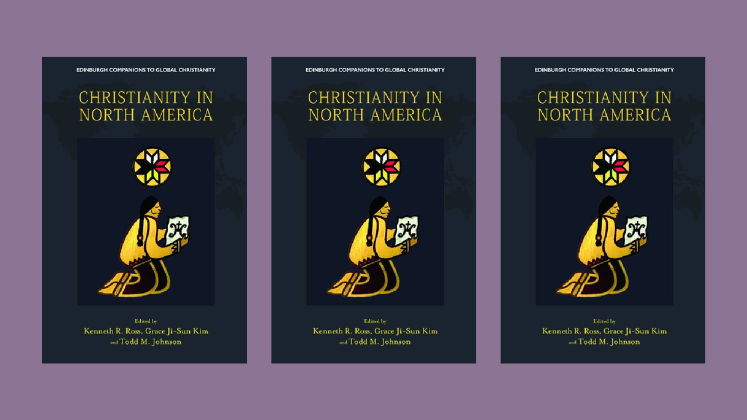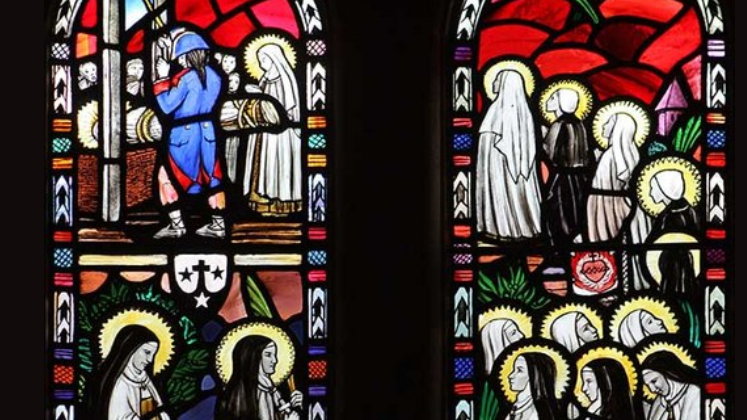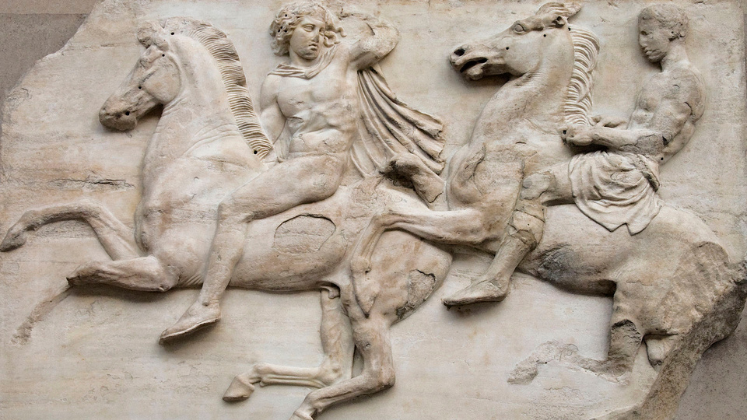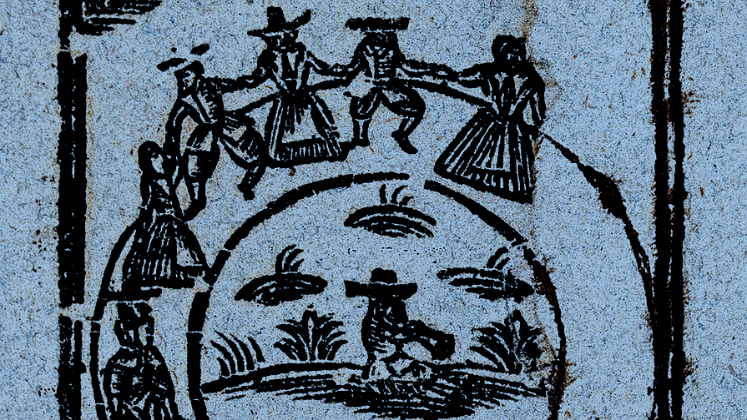‘Christianity in North America’, published in July 2023, forms ‘a deep dive’ into different Christian communities in the US and Canada. Eminent historian of American Christianity, Mark A. Noll, reviews the book and its use of the ‘world Christianity’ approach in North America.

Christianity in North America, edited by Kenneth R. Ross, Grace Ji-Sun Kim, Todd M. Johnson (2023) University of Edinburgh Press. ISBN Hardback: 9781399507431
Positioning North American Christianity in the World
A new book from the University of Edinburgh Press “stand[s] out,” in the words of its editors, “from the existing literature” on the history and current state of Christianity in North America by attempting “to bring a ‘World Christianity’ perspective to bear” (xii). Christianity in North America is the seventh of eight volumes commissioned by the Press to explore Christianity in different world regions by putting to use material from its 2009 Atlas of Global Christianity, 1910-2010, and ongoing surveys collected by the World Christian Database. A fruitful way to assess the success of this effort, as well as to suggest the range of its contents, is to compare what its forty-one authors offer in their chapters with what until recently have been standard approaches.
While widely used treatments of Christianity in the United States have only rarely paused to look outside the nation’s borders, this book takes seriously the United Nations’ definition of “North America”. It includes three chapters on Canada, with particularly helpful insights on why the collapse of Catholicism in Quebec has no exact parallel in the United States and why the rapid decline of Canada’s once-dominant Protestant traditions outlines a history of secularisation that may soon overtake American Protestants. Separate chapters on the region’s three island dependencies also make an important contribution. The structures of European Christendom that remain in St. Pierre and Miquelon (France), Greenland (Denmark), and Bermuda (United Kingdom) seem to have retarded the rapid secularisation seen in Canada and increasingly in the United States.
Any mention of secularisation must first be defined and then measured. Findings from the World Christian Database (WCD), whose categories and methods are well described in the book, enable a comparison between portions of the population that the WCD categorised as Christian in 1970 and in 2020. While Christian adherence is still considerably higher than in Europe, it is falling rapidly and is now well behind North America’s three island nations as well as a growing number of African and Latin American countries. For the U.S., the Christian proportion has fallen from 91% to 74%, for Canada from 94% to 64%.
For several of the chapters, the “world Christianity” perspective has enriched more traditional narratives. An example is a fine essay on the United States’ mainline Protestant churches that rehearses a well-known story about relative loss of influence in favour of evangelicals and Pentecostals. But it also observes that “global Christianity is not an easy fit for the liberal mainline” because its stances on abortion, gay marriage, and sexual identity differ so much from the conservative sexual ethics of Protestants elsewhere in the world and because “the mainline Protestant churches are more than 90% white and are likely to remain so” (230). For other chapters, like those recounting the much-publicised fascination by white evangelical Protestants with Donald Trump, the “world Christianity” perspective plays no part.
Several chapters contain perceptive accounts of recent trends in theology that nicely balance American development of inherited European traditions with more recent influences from the world at large. One explains insightfully that because “relations between North American Anglicanism and the global Anglican Communion are complicated,” emphases in liturgy and theology are affected. Some in the broader Communion, with the largest numbers now in Africa, view the American Episcopal Church and the Anglican Church of Canada as perpetuating “colonial attitudes, financial coercion, a compromise with secularity, a politically liberal agenda, and a spirit of exceptionalism” (189). Another, a more general account, details the controversies that now prevail in convictions concerning Scripture, the Trinity, the nature of God’s Kingdom, and eschatology. Why these controversies? Because “across borders national, state and theological, notions such as conservative, liberal, heretic, literal, metaphoric, social justice, Bible-based, orthodox, mainline, progressive, secular, eco-spirituality, true believer, end-times and ‘spiritual but not religious’ attempt to coexist” (297).
The “world Christianity” perspective is most obvious in chapters dealing with immigration or written from what might be called postcolonial or subaltern angles of interpretation. Where histories of Christianity in North America have long examined the impact of European immigration, several chapters in this book focus on effects of more recent immigration from Asia and Latin America. Regrettably, there is no serious attention to the thousands of local congregations, mostly Protestant but some also Catholic, established by recent African migrants throughout the continent in recent decades. This is a major lapse because those congregations are injecting a mixture of charismatic practice, traditional morality, and economic creativity rare among the continent’s more established Christian traditions.
By contrast, “Asian Americans” receive expert treatment in a chapter explaining the diversity of influences exerted in different ways by growing Christian populations from China, India, the Philippines, Vietnam, Korea, Japan, and several other countries. As examples of increased influence, the first Asian American Catholic bishop was appointed in 2003; among evangelical Protestants, Asian Americans now fill leadership roles in key institutions like InterVarsity Christian Fellowship and the National Association of Evangelicals. Although more attention is needed for what a changing Christian demography means, the book does include brief attention to multi-ethnic and multi-lingual Catholic parishes in Los Angeles and Toronto. The chapter on worship also charts the growing presence of music originating in Latin America, Australia, and several Asian countries, as well as growing general appreciation for spiritual dynamics practiced by Africans, African Americans, and other minorities.
For adding an interpretive lens from postcolonial realities to an assessment of immigrant experience, one of the chapters on Hispanic Americans is particularly effective. It does note the long U.S. history of discrimination against immigrants from Latin America. But it ends with a vision for the future not requiring “a complete eradication of Euro-American church traditions”, but rather a “sifting [of] racial sin” that leads to “rebuilding the North American church based upon the diverse cultural treasures of the various ethnic groups which will comprise the US church in the coming decades” (435).
Among contributions where postcolonialism dominates, the best concern Native Americans. The chapter on Canadian Indigenous Christians begins by recording the culture-destroying legacy of the residential school system. But it also shows how Canadian First Nation Christians have been extricating themselves “from the confines of Western church traditions and structures, including modes of governance and worship” (38) in order to embrace “the triple restorative mandates of right relationship with God and other spiritual powers, right relationship with one another in the human community and right relationship with and relatedness to the rest of creation, of which humanity is but a part” (28).
Several other chapters, however, offer mostly an ideological litany without concrete analysis or specific exhortation—for example, “European-Christian racialisation generates a spiritual metanarrative justifying the unearned privilege, power and profit of those benefiting from a white supremacy that accepts the colonialist order as the will of God” (275).
This book has made an important beginning at explaining its subject in terms of Christianity viewed globally. If its success is only partial, it does indicate how such a task can be carried out.






This book offers a refreshing and insightful perspective on the history and current state of Christianity in North America. Its commitment to a “World Christianity” lens is commendable, shedding light on often overlooked aspects such as the impact of immigration from Asia and Latin America and the experiences of Indigenous communities. The inclusion of diverse viewpoints enriches the narrative, offering a nuanced understanding of the region’s religious landscape. However, it’s worth noting areas for further exploration, such as the absence of analysis on the emergence of African migrant congregations. Overall, this book serves as a valuable contribution to the field, laying a strong foundation for future studies in global Christianity.